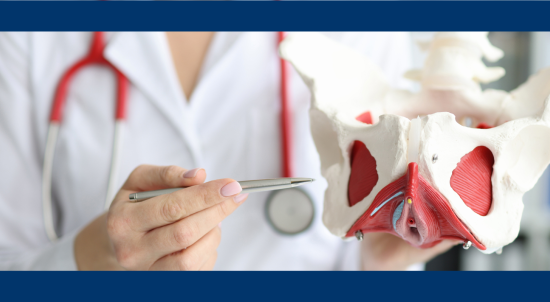
Description
This course teaches learners the underlying principles behind conventional radiography, computerized axial tomography (CT), magnetic resonance imaging (MRI), and ultrasound. The radiology of chest, abdomen, pelvis, extremities, spine and brain are taught in this course using a combination of lectures and extensive practical activities and assessments.
Topics covered in the lectures include: Introductions to conventional radiography, computerized tomography (CT), ultrasound, magnetic resonance imaging (MRI), chest radiology, CT of the chest, chest radiology: introduction to pathology, normal CT anatomy of the abdomen, renal anatomy, colon cancer, renal neoplasm, normal pelvic imaging, normal male pelvis imaging, normal female pelvis imaging, radiology of the upper extremities, radiology of the lower extremities, musculoskeletal imaging modalities, introduction to spine radiographs, skull radiography, brain CT imaging fundamentals, brain CT imaging pathology, brain: magnetic resonance imaging (MRI), and brain MRI pathology.
📌 This course is one of four in the Yale Human Anatomy Specialization. The full series also includes: Anatomy of the Chest, Neck, Abdomen, and Pelvis; Anatomy of the Head and Spine; and Anatomy of the Upper and Lower Extremities.
Course Takeaways
- Describe the principles of conventional radiography, CT MRI and ultrasound
- Describe systematic approaches to imaging interpretation
- Describe the use of windowing in CT
- Describe sequences in MRI and their relevance.
Meet the Instructors
 Dr. Duncan graduated from Vanderbilt University in 1968 with a BA degree and received his medical degree from Duke University in 1972. He did his surgical internship from 1971-1972 at Duke and his neurosurgery residency, also at Duke, from 1972-1977. He joined the Yale faculty and the Yale-New Haven Hospital staff in 1977. He received his board certification in Neurosurgical Surgery in 1979. In 1978, he became Chief of Pediatric Neurosurgery at Yale and has progressed through the academic ranks at the university to become Professor of Neurosurgery and Pediatrics in 1994. He spent 1985-1986 in Special Studies at the School of Organization and Management Group. He has established the only dedicated pediatric neurosurgical unit in the state, published over 100 articles, and has been the principal investigator or co-investigator in twenty funded research projects. He was the co-principal investigator for the Indomethacin Projects to prevent intraventricular hemorrhage in preterm infants, which has been adopted in over 75 countries. He has served on the Credentials Committee, Operating Room Work Redesign Committee, By-Laws Review, Risk Management and other hospital committees. He is the program director for the Neurosurgery Residency Program. After running one marathon, Dr. Duncan decided he preferred fly-fishing.
Full biography
Dr. Duncan graduated from Vanderbilt University in 1968 with a BA degree and received his medical degree from Duke University in 1972. He did his surgical internship from 1971-1972 at Duke and his neurosurgery residency, also at Duke, from 1972-1977. He joined the Yale faculty and the Yale-New Haven Hospital staff in 1977. He received his board certification in Neurosurgical Surgery in 1979. In 1978, he became Chief of Pediatric Neurosurgery at Yale and has progressed through the academic ranks at the university to become Professor of Neurosurgery and Pediatrics in 1994. He spent 1985-1986 in Special Studies at the School of Organization and Management Group. He has established the only dedicated pediatric neurosurgical unit in the state, published over 100 articles, and has been the principal investigator or co-investigator in twenty funded research projects. He was the co-principal investigator for the Indomethacin Projects to prevent intraventricular hemorrhage in preterm infants, which has been adopted in over 75 countries. He has served on the Credentials Committee, Operating Room Work Redesign Committee, By-Laws Review, Risk Management and other hospital committees. He is the program director for the Neurosurgery Residency Program. After running one marathon, Dr. Duncan decided he preferred fly-fishing.
Full biography
 Dr. Stewart came to Yale in 1976 after earning a PhD in anatomy from Emory University. He began teaching anatomy in 1978. He teaches gross anatomy and neurobiology to medical, physician associate and nursing students, as well as paramedics. During that time he has taught more than 7,000 students. He is interested in both “hands on” learning in the lab as well as computer based learning. In his spare time, he follows football (Chelsea and Barcelona) and he cooks.
Full biography
Dr. Stewart came to Yale in 1976 after earning a PhD in anatomy from Emory University. He began teaching anatomy in 1978. He teaches gross anatomy and neurobiology to medical, physician associate and nursing students, as well as paramedics. During that time he has taught more than 7,000 students. He is interested in both “hands on” learning in the lab as well as computer based learning. In his spare time, he follows football (Chelsea and Barcelona) and he cooks.
Full biography
 Shanta E. Kapadia joined the faculty of the Section of Anatomy at the Yale University School of Medicine in 1975. She completed her medical education at the Christian Medical College, Vellore; one of the foremost medical schools in India. She obtained her M.B.B.S. degree, the equivalent of the M.D. in the U.S. In her early years at medical school she developed a love of anatomy and of teaching. Thereafter, she did graduate training and was awarded the degree of Master of Surgery, Anatomy. At Yale she has taught gross anatomy and microscopic anatomy to thousands of Medical Students for the past 43 years and to Physician Associate Students ever since the inception of the Physician Associate Program at Yale. Dr. Kapadia is one the most decorated teachers at Yale having won every teaching and mentorship award presented at commencement for both Medical and Physician Assistant students. Dr. Kapadia spends her spare time in the garden and playing with her grandchildren.
Full biography
Shanta E. Kapadia joined the faculty of the Section of Anatomy at the Yale University School of Medicine in 1975. She completed her medical education at the Christian Medical College, Vellore; one of the foremost medical schools in India. She obtained her M.B.B.S. degree, the equivalent of the M.D. in the U.S. In her early years at medical school she developed a love of anatomy and of teaching. Thereafter, she did graduate training and was awarded the degree of Master of Surgery, Anatomy. At Yale she has taught gross anatomy and microscopic anatomy to thousands of Medical Students for the past 43 years and to Physician Associate Students ever since the inception of the Physician Associate Program at Yale. Dr. Kapadia is one the most decorated teachers at Yale having won every teaching and mentorship award presented at commencement for both Medical and Physician Assistant students. Dr. Kapadia spends her spare time in the garden and playing with her grandchildren.
Full biography



